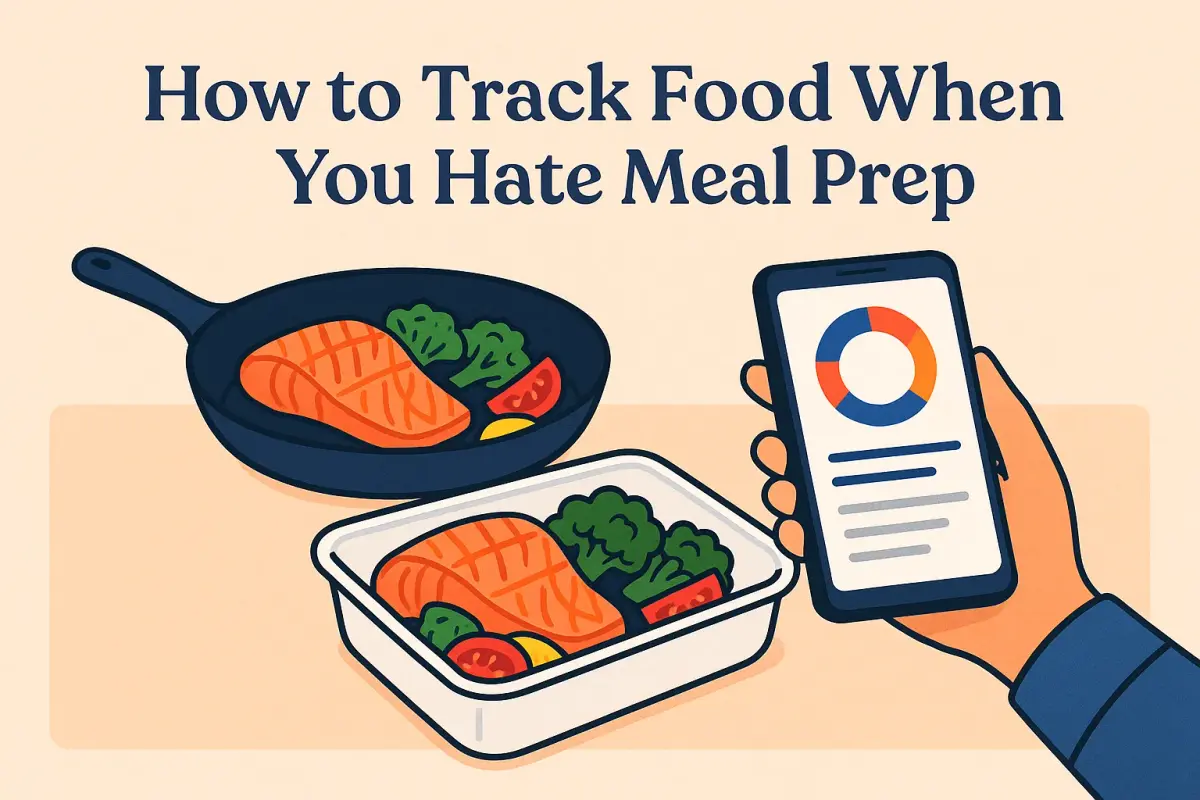Not everyone enjoys preparing a week’s worth of meals in Tupperware. The truth is, meal prep just isn’t realistic—or enjoyable—for many people, especially beginners who are new to nutrition tracking. The good news? You don’t need to meal prep to successfully track your calories or macronutrients. You don’t even need to plan every meal ahead of time.
In this extended guide, we’ll show you how to take a flexible, no-prep approach to food tracking that works for real life: spontaneous dinners, takeout lunches, and grab-and-go snacks included. Whether your goal is fat loss, muscle gain, or just building awareness, you’ll learn how to make progress—without becoming a slave to the kitchen.
Why People Think Meal Prep Is Required
Meal prep has been popularized on social media as a must-do for fitness and weight loss. Rows of identical meals stacked in plastic containers often signal discipline, dedication—and, for some, dread. But the truth is that the strategy of preparing everything ahead of time was designed for convenience, not perfection. If it doesn't make your life easier, it’s probably not helping.
Here’s the truth: you can be successful at nutrition tracking without cooking anything ahead of time. Meal prep is a tool—not a requirement.
3 Core Strategies for Tracking Without Meal Prep
1. Log What You Eat as You Go
This approach is simple: instead of planning everything in advance, you track your meals immediately after you eat them. Using an app like CounterCal, you can just type in “turkey sandwich with cheese and chips,” and the app uses AI to estimate calories and macros. No need to measure, weigh, or dig through a food database.
Pro tip: Try logging your meals immediately after eating or set a reminder to log everything at the end of the day. Choose what feels more sustainable to you.
2. Create a Rotation of Easy Meals You Already Like
Instead of prepping, create a mental (or digital) list of go-to meals you can throw together fast—think: Greek yogurt and berries, eggs on toast, rotisserie chicken with salad mix. These meals don’t require prep but are easy to estimate and track. Bonus: they reduce decision fatigue.
3. Shop for Pre-Portioned and Prepped Ingredients
You can “outsource” your meal prep by choosing foods that are already ready to eat or easy to combine:
- Pre-cooked chicken or fish
- Boiled eggs
- Microwaveable grain pouches (rice, quinoa)
- Chopped veggies or bagged salads
- Single-serve hummus, nut butter, or yogurt
All of these reduce prep time to nearly zero while still giving you control over your food choices.
How to Track Spontaneous, Takeout, or Social Meals
This is where many beginners get stuck. “How do I track when I didn’t make the meal?” Here’s how:
- Describe the meal naturally: “Burger with bun, cheese, and fries” is enough for CounterCal to give you an estimate.
- Use portion cues: Estimate how much you ate using hand portions or visual comparisons (fist = ~1 cup, palm = ~4 oz protein).
- Log it anyway: Imperfect tracking is better than no tracking. Aim for consistency over precision.
Real-World Example: A Day of Tracking Without Prepping
Let’s say you didn’t prep anything but want to stay mindful. Here’s what a day might look like:
- Breakfast: Coffee + banana + protein bar → log as “protein bar and banana”
- Lunch: Supermarket salad with grilled chicken → log as “chicken Caesar salad, no croutons”
- Snack: Cheese stick and crackers → “cheddar stick and handful of crackers”
- Dinner: Thai takeout → “chicken pad Thai, medium portion”
Each of these entries takes 10 seconds or less in CounterCal. No prep, no guilt, no problem.
How to Stay Consistent Without Burnout
Here’s the key: you don’t have to track perfectly every day. You just need to show up most days and pay attention. Here are a few tips to help you stay consistent over time:
- Set a goal to track 4–5 days per week—not 7
- Review your weekly logs instead of obsessing over every meal
- Use templates for breakfast or lunch to speed things up
- Forgive yourself for “off” days—life happens
How CounterCal Supports Flexible Tracking
CounterCal is designed for flexibility. Whether you’re cooking from scratch or grabbing takeout, you can describe your food the way you’d say it out loud. The app’s AI estimates the nutritional value based on your description—eliminating the need for tedious searches or portion math. Plus, you can scan barcodes when needed, set goals, and monitor your trends—all in one place.
You Don’t Have to Be a Chef to Track Like a Pro
Meal prep works for some, but it’s not the only way to build a healthy relationship with food. If you prefer spontaneity, variety, and flexibility, there’s no reason you can’t still track, stay mindful, and reach your goals.
Try CounterCal and experience the freedom of food tracking—without the pressure of meal prep.
